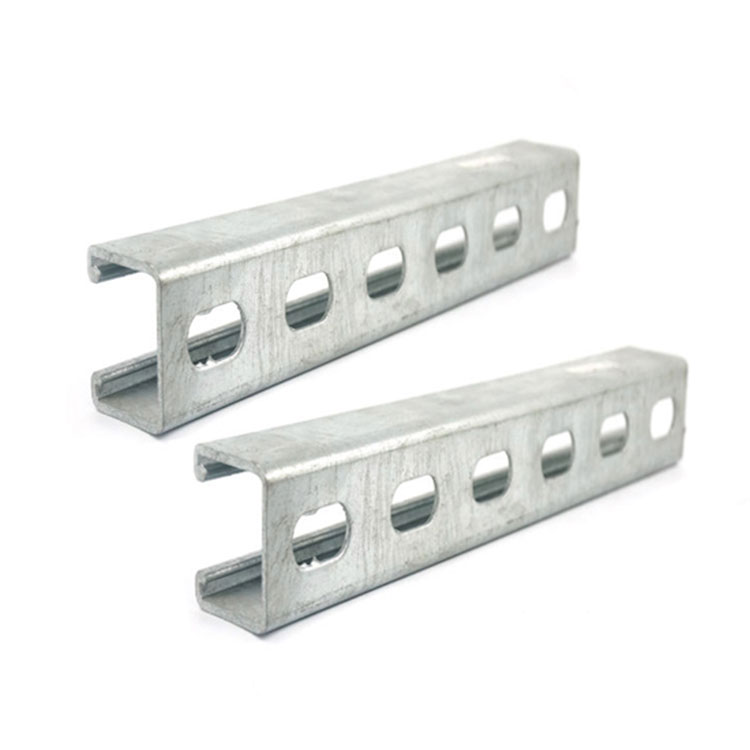The Manufacturing Process and Materials Behind Sheet Metal U Channel
2024-06-20
Sheet Metal U Channel, with its versatile U-shaped cross-section, is a crucial component in numerous construction and manufacturing applications. Understanding how these channels are manufactured and the materials used in their production can shed light on their widespread utility and reliability. This blog will delve into the typical manufacturing process of Sheet Metal U Channel and explore the common materials employed in their creation.
The Manufacturing Process of Sheet Metal U Channel
1. Material Selection:
- Raw Material Sheets:
- The process begins with selecting high-quality sheet metal. Common materials include steel, aluminum, and stainless steel, chosen based on the desired properties of the final product.
- Thickness and Width:
- The thickness and width of the sheet metal are determined based on the intended application of the U Channel. Thicker sheets provide greater strength and durability.
2. Cutting:
- Precision Cutting:
- Large sheets of metal are cut into smaller, manageable pieces using shearing machines, laser cutters, or plasma cutters. Precision is crucial at this stage to ensure the dimensions are accurate and consistent.
3. Forming:
- Roll Forming:
- The most common method for creating U Channels is roll forming. In this continuous process, the cut metal sheets pass through a series of rollers that gradually shape them into the U profile. This method is efficient and allows for high-volume production with consistent quality.
- Press Braking:
- For smaller production runs or custom profiles, press braking can be used. This involves placing the cut metal sheet into a press brake machine, where a punch and die are used to bend the sheet into the desired U shape.
4. Welding (if needed):
- Seam Welding:
- In some cases, especially for thicker or more robust U Channels, welding may be necessary to join pieces or add additional support. Seam welding ensures the joints are strong and capable of withstanding high stress.
5. Finishing:
- Deburring:
- After forming, the U Channels are deburred to remove any sharp edges or burrs that could pose a safety hazard or interfere with installation.
- Surface Treatment:
- The channels may undergo various surface treatments, such as galvanizing, painting, or powder coating, to enhance corrosion resistance and aesthetic appeal. These treatments also improve the longevity of the U Channels in harsh environments.
6. Quality Control:
- Inspection:
- A thorough inspection ensures that the U Channels meet the required specifications and standards. Dimensional accuracy, surface finish, and structural integrity are all checked before the product is approved for distribution.
Common Materials Used in the Production of Sheet Metal U Channel
1. Steel:
- Carbon Steel:
- Carbon steel is a popular choice due to its high strength and affordability. It is suitable for structural applications where durability is crucial.
- Galvanized Steel:
- Galvanized steel has a zinc coating that protects against rust and corrosion, making it ideal for outdoor and high-moisture environments.
2. Aluminum:
- Lightweight and Corrosion-Resistant:
- Aluminum U Channels are prized for their lightweight nature and excellent resistance to corrosion. They are commonly used in applications where weight savings are essential, such as in the aerospace and automotive industries.
- Malleability:
- Aluminum’s malleability allows for easy forming and customization, making it suitable for a wide range of applications.
3. Stainless Steel:
- High Corrosion Resistance:
- Stainless steel offers superior resistance to corrosion and staining, making it ideal for use in harsh environments, including marine and chemical industries.
- Aesthetic Appeal:
- The polished finish of stainless steel is often preferred for applications where appearance is important, such as in architectural features and medical equipment.
4. Other Specialty Metals:
- Copper:
- Though less common, copper U Channels are used for their excellent electrical conductivity and corrosion resistance in specific industrial applications.
- Brass:
- Brass U Channels are used in decorative and low-friction applications due to their attractive appearance and durability.
Conclusion
The manufacturing process of Sheet Metal U Channel involves precise cutting, forming, and finishing techniques to produce a versatile and reliable product. By understanding the various stages of production and the common materials used, we can appreciate the engineering and craftsmanship that go into creating these essential components. Whether made from steel, aluminum, or stainless steel, Sheet Metal U Channels play a vital role in construction, manufacturing, and numerous other industries, thanks to their strength, durability, and adaptability.



